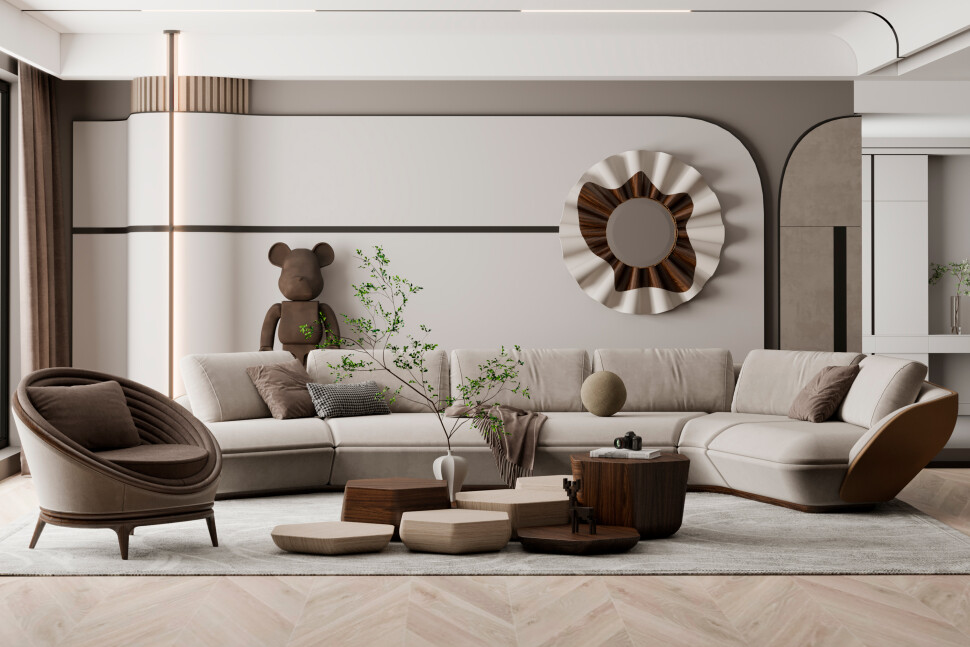In recent years, Furniture Trends have evolved significantly, aligning with contemporary design philosophies and the growing need for functionality, comfort, and sustainability. As modern living spaces continue to change, homeowners are seeking furniture pieces that not only complement their aesthetic preferences but also enhance their everyday lives. Whether you are remodeling an entire home or simply updating a room, understanding the key trends in furniture design can help you make informed decisions that will breathe new life into your space.
Minimalist Aesthetic: Less is More
One of the most prominent Furniture Trends is the minimalist design approach, which emphasizes clean lines, simplicity, and functionality. The principle of “less is more” has taken center stage in modern home interiors, reflecting a desire to declutter living spaces and focus on essential elements. This design philosophy encourages the use of furniture that serves both form and function, with pieces that are sleek, understated, and versatile.
In minimalist spaces, neutral color palettes dominate, with white, gray, and earth tones creating a serene and inviting atmosphere. Furniture often features geometric shapes, smooth finishes, and lightweight frames, ensuring that each piece feels unobtrusive while contributing to the overall balance of the room. The minimalist style is particularly suited for small apartments and urban settings, where maximizing space and creating a sense of openness is crucial.
Sustainable and Eco-Friendly Materials
As environmental awareness continues to rise, sustainability has become a key driving force behind modern Furniture Trends. Consumers are increasingly choosing pieces made from sustainable and eco-friendly materials, such as reclaimed wood, bamboo, and recycled metal. This shift reflects a broader desire to reduce waste and minimize the environmental impact of production processes.
Furniture brands are responding by introducing collections crafted from ethically sourced materials, with an emphasis on longevity and durability. For example, many pieces now feature high-quality finishes that increase the lifespan of furniture, ensuring it withstands the test of time. Additionally, the use of biodegradable and non-toxic materials is becoming standard, ensuring that furniture is not only eco-friendly but also safe for the home environment.
Multifunctional and Modular Designs
As urban living becomes more prevalent and space constraints become more common, multifunctional furniture has risen to prominence as a top trend in modern homes. Furniture Trends now focus on pieces that can serve multiple purposes, optimizing space and offering greater utility. Items such as sofa beds, expandable dining tables, and storage ottomans allow homeowners to maximize the potential of their living areas, particularly in smaller homes.
Modular furniture, which allows pieces to be customized and reconfigured to fit various needs and spaces, is another popular trend. Modular sofas, shelving units, and even office furniture offer unparalleled flexibility, enabling homeowners to adapt their furniture arrangements as their lifestyle or space requirements change. This trend reflects the growing demand for furniture that can evolve alongside the needs of the homeowner.
Statement Pieces and Bold Colors
While minimalist designs remain a dominant trend, the use of statement furniture pieces has also become a growing Furniture Trend in modern homes. In contrast to the neutral and understated tones of minimalist decor, bold and vibrant furniture items are being used to make a statement and add personality to spaces. Brightly colored sofas, patterned armchairs, and unique coffee tables inject life and energy into otherwise neutral rooms.
This trend encourages the incorporation of furniture that stands out, whether through rich jewel tones, striking patterns, or unusual materials. These statement pieces serve as focal points within a room, drawing attention and sparking conversation. For those hesitant to commit to bold furniture choices, accent pieces such as throw pillows, rugs, and lamps can be used to introduce pops of color without overwhelming the space.
Technology-Integrated Furniture
As technology continues to advance, the integration of smart technology into furniture has emerged as one of the most innovative Furniture Trends in modern design. From sofas with built-in USB charging ports to tables equipped with wireless charging capabilities, technology is now seamlessly woven into the fabric of home furniture. These pieces not only provide convenience but also cater to the needs of a tech-savvy generation.
Smart furniture also includes features like voice-controlled lighting, temperature regulation, and even furniture that adjusts its shape to support optimal posture. As the demand for smart homes grows, the use of furniture that complements these high-tech environments is expected to rise. This trend speaks to a desire for greater comfort, convenience, and functionality in everyday living spaces.
Retro Revival: Vintage Meets Modern
Another intriguing Furniture Trend is the resurgence of retro and vintage-inspired furniture designs. Drawing influence from the mid-20th century, this style blends nostalgia with contemporary sensibilities. Vintage furniture pieces, such as teak wood dining tables, curved armchairs, and retro coffee tables, are being reinterpreted with modern materials and techniques, creating a timeless appeal that fits seamlessly into today’s interiors.
This trend allows homeowners to incorporate unique, character-rich pieces into their homes while avoiding the mass-produced, cookie-cutter designs found in many contemporary furniture collections. By mixing vintage finds with modern elements, homeowners can create a space that reflects both their personal taste and an appreciation for design history.
In Conclusion, In the ever-evolving world of Furniture Trends, the focus has shifted towards designs that prioritize functionality, sustainability, and style. Whether it’s the minimalist approach that emphasizes simplicity and efficiency or the growing demand for eco-friendly materials, today’s furniture trends are about enhancing both the aesthetic and practical aspects of home living. By staying informed about these trends, homeowners can ensure their spaces remain relevant, functional, and reflective of their personal style for years to come.






More Stories
Beautiful Wooden Furniture Design Ideas for Warm Interiors
Custom Made Furniture Ideas for Unique and Modern Homes
Modern Living Room Furniture Ideas to Refresh Your Space